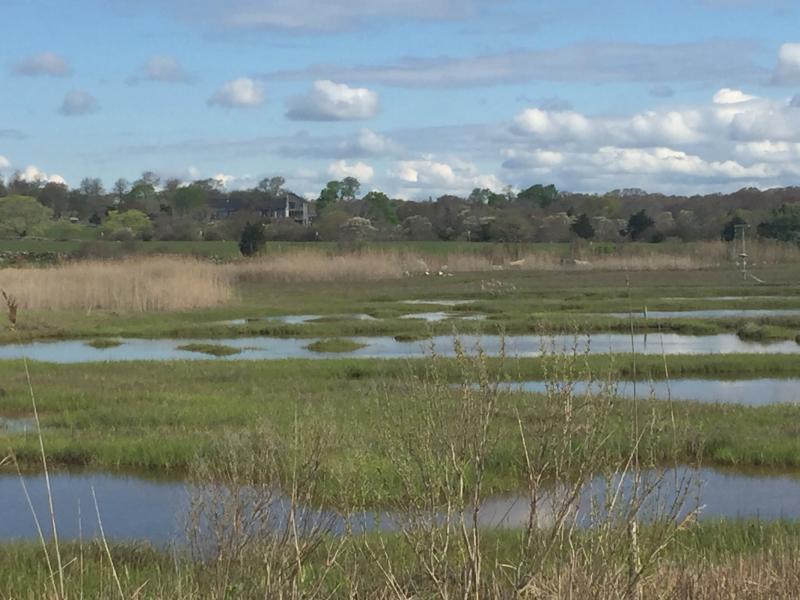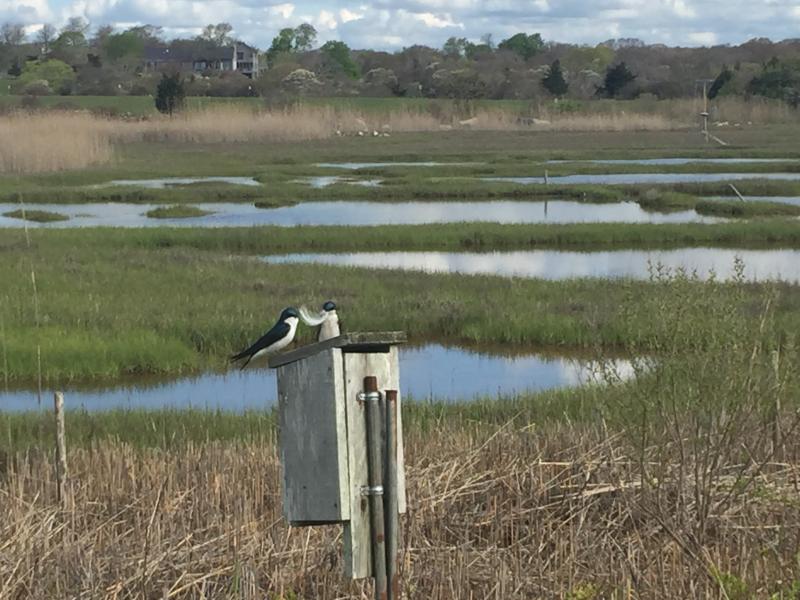This is how professional birders stalk wildlife
"How come I don't know what this bird is? So frustrating!" said Lauren Miller-Donnelly, property manager for the Allens Pond Wildlife Sanctuary.
Miller-Donnelly had gathered with volunteer Doug Hlousek to lead a birdwatching walk on May 11, but with no attendees this week, the two had time to follow their own fancies.
"It could be a common redshank, which is the European version of the yellow leg," guessed Miller-Donnelly, as she flipped through the taxonomical index of her Sibley Bird Guide app.
"It's all black on the top. It's eye has a fascinating look to it," she continued. "Now you're witnessing what crazy people do when they see a rare bird," she laughed.
After 90-minutes of phone calls, descriptions, and photos, the Mass Audubon team identified the mystery bird as a young ruff, originally from Europe.
They guessed the ruff had blown across the Atlantic in a storm, but explained that the wildlife sanctuary is a common stopping point for non-native birds migrating along the coast.
"The migrants see a lot of green. It means a place to rest and a place to get food," explained Hlousek.
In fact, the whole sanctuary area has been designated as an Important Bird Area (IBA) by BirdLife International. Not only does the diverse landscape — complete with salt ponds, woods, and fields — attract a variety of birds, but it also houses endangered species, and a high number of winter birds too.
During the escapade, the two identified seaside sparrows, which build a nest, lay eggs, and hatch and fledge their young all within a 28-day moon cycle; savannah sparrows, which nest in the middle of meadows; and a pair of tree swallows, which construct their nests with grasses, and then line them with feathers.
"See this bird right up here? That's why it's called a song sparrow. He just gets up there and sing and sings and sings," said Hlousek.
The two continued watching the ruff, moving around the pond to get a closer view. The ruff darted at nearby birds regularly, giving staff a chance to view the novelty.
"He's looking for a mate, so he's all full of hormones. He'll be puffing up his neck," said Programs Administrator Jen Costa.
But eventually, Miller-Donnelly and Hlousek were ready to move on.
"The warblers, that's what I like to see this time of year. The warblers," said Hlousek. "The colors, the opportunity to hear their song. The short time they're here, [which is only a 20-day period]."
Visitors can tap into the staff's expertise on upcoming walks, scheduled for May 18 and May 25, 8-11 a.m. Those attending should dress for an outdoor hike and bring insect repellant and sunscreen. Binoculars, a scope, hat, and sunglasses are also useful, as are snacks and drinks for field breaks.
The cost is $10 each for Mass Audubon members, and $12 for non-members. Preregistration is required; visit massaudubon.org/allenspond or call (508) 636-2437.

















